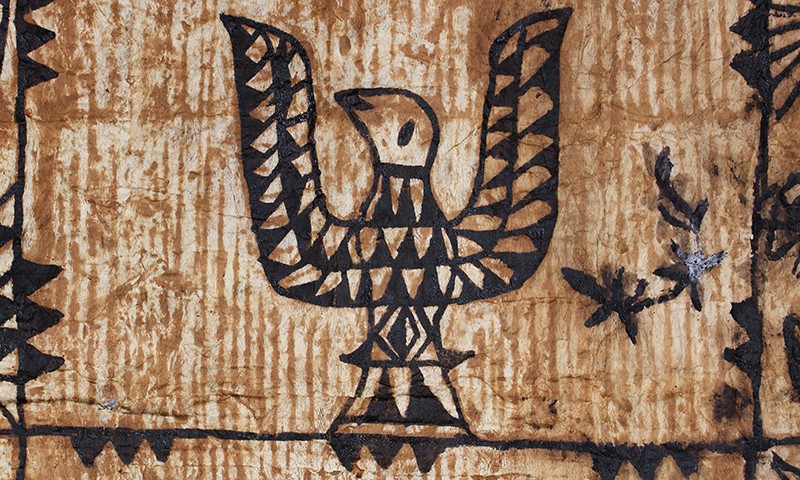 |
Tapa Cloth (Ngata), 20th Century
Tongan culture; Tonga, Polynesia
Pounded tree bark and pigment; 78 x 152 in.
93.18.1
Donated by Jeff and Laura Blackie |
Trip to Motunui
When Walt Disney Animation Studios released Moana (2016) to a tidal wave of good reviews, the Bowers Museum was overjoyed to see Polynesian culture and art achieve broad recognition within popular culture. But as one of Southern California’s best collections of Oceanic art, it was difficult for us at the Bowers to not scrutinize the film with an eye for detail. Fortunately, this upcoming Saturday August 11, 2018, the Bowers Museum will be featuring an outdoor screening of Moana (click here for more details), an event which provides the perfect opportunity for the Bowers Blog to see exactly where Moana drew inspiration for its Polynesian aesthetic.
Te Kā Tapa
When researching Moana, the two directors spent three weeks travelling around Oceania looking to ground their fictional story in authentic Polynesian culture. In total they visited seven different island chains. Polynesian mythology is an oral history, and was never documented in artwork; so, to make the film’s exposition more visual, the team created a synthetic style of tapa—a cloth-like material most often made by pounding the bark of the paper mulberry tree until it has the proper consistency. Moana’s tapa was inspired by the bark cloth of the islands they visited, but was ultimately a creation of Walt Disney Animation Studios. The two largest influences here are siapo from Samoa, which can feature well-defined geometric borders and the ngatu cloth made on Tonga. As seen in the above detail of a massive swath of tapa, Tongans were one of the few to use zoomorphic figures in their designs, as opposed to just geometric and floral patterns.

Fish Hook (Makau), 19th Century
Hawaii, Polynesia
Bone; 2 3/8 x 1 3/8 x ¼ in.
2014.24.1
Gift of Mr. and Mrs. Mark and Carolyn Blackburn |
The Hook
The character of Maui seen in Moana predates the film by at least a few thousand years. As the movie explores, all of Polynesia is connected by a single cultural root. As humans spread through the islands of Polynesia they brought the story of Maui with them. Like any other living, breathing thing, stories have a tendency to change though and depictions of Maui are anything but consistent. There is no consensus on whether he was a man, demigod, or god; or even if he was just one person. What almost every version of his story agrees upon, is that Maui used a magical fish hook to pull the islands Polynesians live on from the depths of the Pacific Ocean—and that it was usually through some fairly clever tomfoolery. The immense size of the fish hook we see in Moana is a Disney innovation, but on a smaller scale it was clearly inspired by Hawaiian fish hooks, which were known for both their quality and variety. The distinctive outer barb is dead giveaway. Two demonstrative objects used in Spirits and Headhunters by the Bowers’ docents share nearly the exact same form as Maui’s hook, even down to the fiber wrapping.

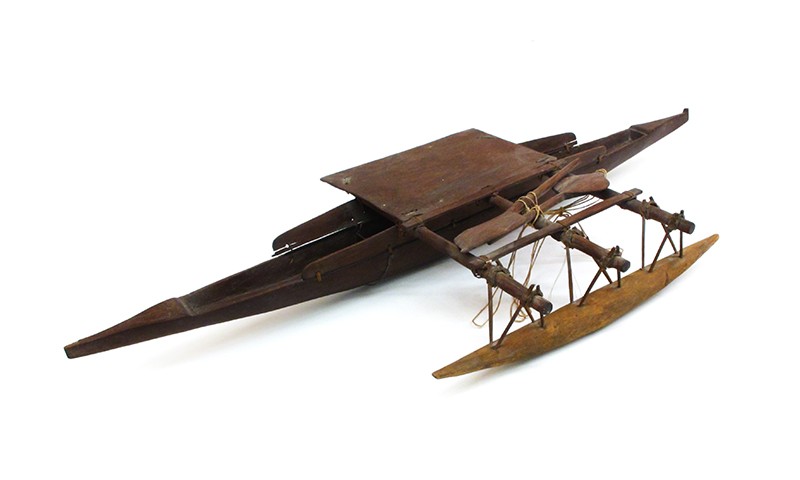 |
Canoe Model (Drua), 19th Century
Probably Fiji, Polynesia
Wood and fiber; 3 1/4 x 29 1/2 x 11 3/8 in.
2012.19.2
Gift of Diana Springer |
Return to Voyaging
An outrigger is a secondary float attached to the main body of a canoe to stabilize the vessel, and it gives its name to canoes which have outriggers. As we see in Moana, the largest of these vessels could reach length of up to 100 feet, and more than any other single invention, it was outriggers that allowed for Polynesian island hopping. That these ships are one of Moana’s major plot points is illustrative of just how important they were to Polynesian societies. The small vessel which Moana pilots throughout the film in is based on the Fijian camakau, a relatively small outrigger with a triangular sail. The camakau was a smaller version of the Fijian drua, a vessel which could reach lengths of up to 100 feet. The Bowers Museum’s model of a drua is difficult to recognize as a counterpart to Moana’s boat, due to its lack due to its lack of a mast and sail.

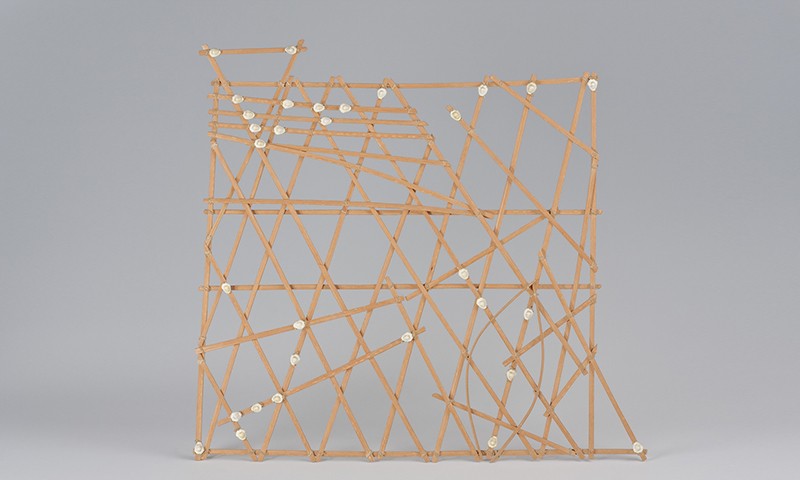 |
Navigational Chart, 20th century
Kuijlen Island, Marshall Islands, Micronesia
Palm leaf midribs, fiber and cowrie shells; 20 1/4 x 21 5/8 x 5/8 in.
97.132.1
Gift of Jesse W. Curtis |
Wayfinding
In Moana we see our heroine navigate the seas using the stars, but that was just one of the means by which the inhabitants of Oceania taught wayfinding. The Marshall Islands are a Micronesian culture and not a Polynesian culture, but this navigational chart contains much of the quintessential knowledge way finders brought with them to the ocean. The Marshall Islands contains a total of 1,156 islands, so different charts were made to show the entirety of the islands, smaller chains, or were purely instructional. The cowrie shells and strips of wood represent features such as reefs, islands and currents, but reading the chart requires very specific knowledge. Unlike the techniques Moana employs, to actually take a navigational chart like this out to sea would be a sign that the navigator had no confidence in their abilities.
To see Moana and Spirits and Headhunters, and compare the two yourself, be sure to come to our outdoor screening of Moana on August 11.
Edit: this event has since closed.
Text and images may be under copyright. Please contact Collection Department for permission to use. References are available on request. Information subject to change upon further research.



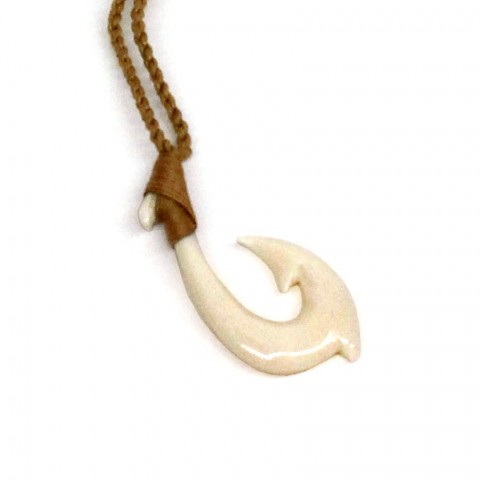
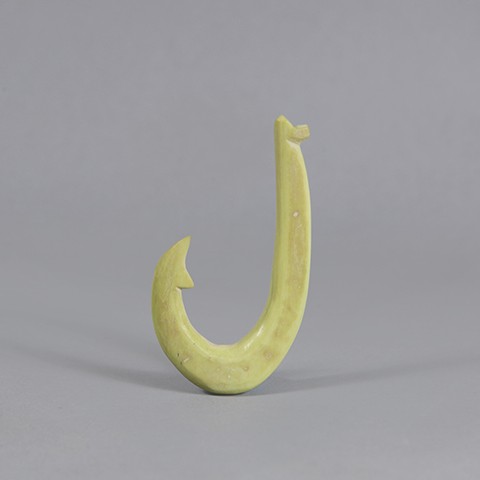
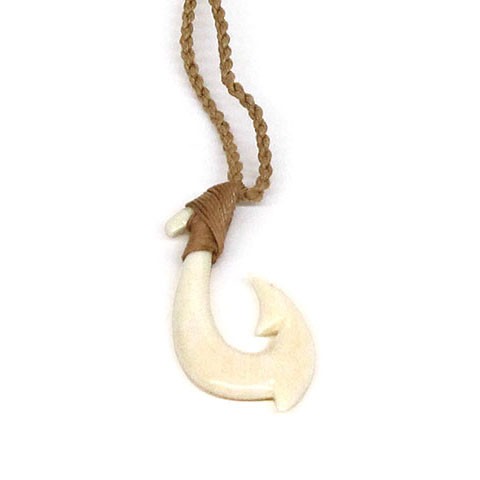


Comments